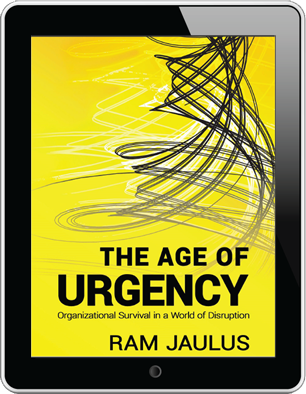digital edition in special price
How can organizations deal with technologies that change at a dizzying pace?
- Must-Read Book for CEOs
- The ultimate organizational survival guide
- Innovative perspective for the concept of change

In the past, we believed that a successful change was based upon the foundation of appropriate plans and assessments, and therefore the organization should well prepare before carrying through in a new direction. However, the rules of the game have now dramatically changed. The essence of the change we experience is defined through its pace – and this overturns all earlier assumptions.
The situation is different today than ever before. The pace of change has become one of the key drivers of the changes themselves. Technological innovations completely revolutionize our lives – and do so consistently and frequently. New products and services constantly generate market disruptions. They dispense with previous roles, antiquate existing (successful) technologies, and sometimes eliminate the basis of existence of entire organizations.
For any organization, particularly in the business sector, this reality has just one connotation: a giant flashing red light. In a world found in increasing disruption, something must change so that we may continue to exist. Something about us, in the way we manage ourselves, our organizations and our businesses.
If we do not take this upon ourselves, no one will.
Charles Darwin recognized many years ago, that “it is not the strongest of the species that survives, nor the most intelligent that survives.
It is the one that is most adaptable to change”.
He was right. What is relevant is the adaptation to change, the ability to adjust to a changing environment and to thrive within it in order to achieve success. The solution is to embrace the change.
On the one hand – we have “Old World” organizations. They are institutionalized, rigid, with a long-standing hatred for change and a firm belief across all the administrative strata that “if it was not invented here, it has no value”. On the other hand- there are the “New World” organizations; the “disruptors”, the “innovators”. These are the organizations that diligently work on the product they just launched, and to a large extent struggle against the established organizations and the existing agenda.
One thing is common to organizations everywhere, on either side of the continuum: ego and arrogance. We are all busy with the here and now, with what is familiar and comfortable. There is no business supervising “flood control”.
It is important to recognize that almost all of today’s organizations are addressing the challenge of readiness for the world of tomorrow. Yet this is all just cosmetics; a tactical response. At its core, the organization remains the same, with very limited and delayed response capabilities. To prepare for the future, something very basic must change in the organization. The most basic thing.
How can organizations deal with technologies that change at a dizzying pace?
